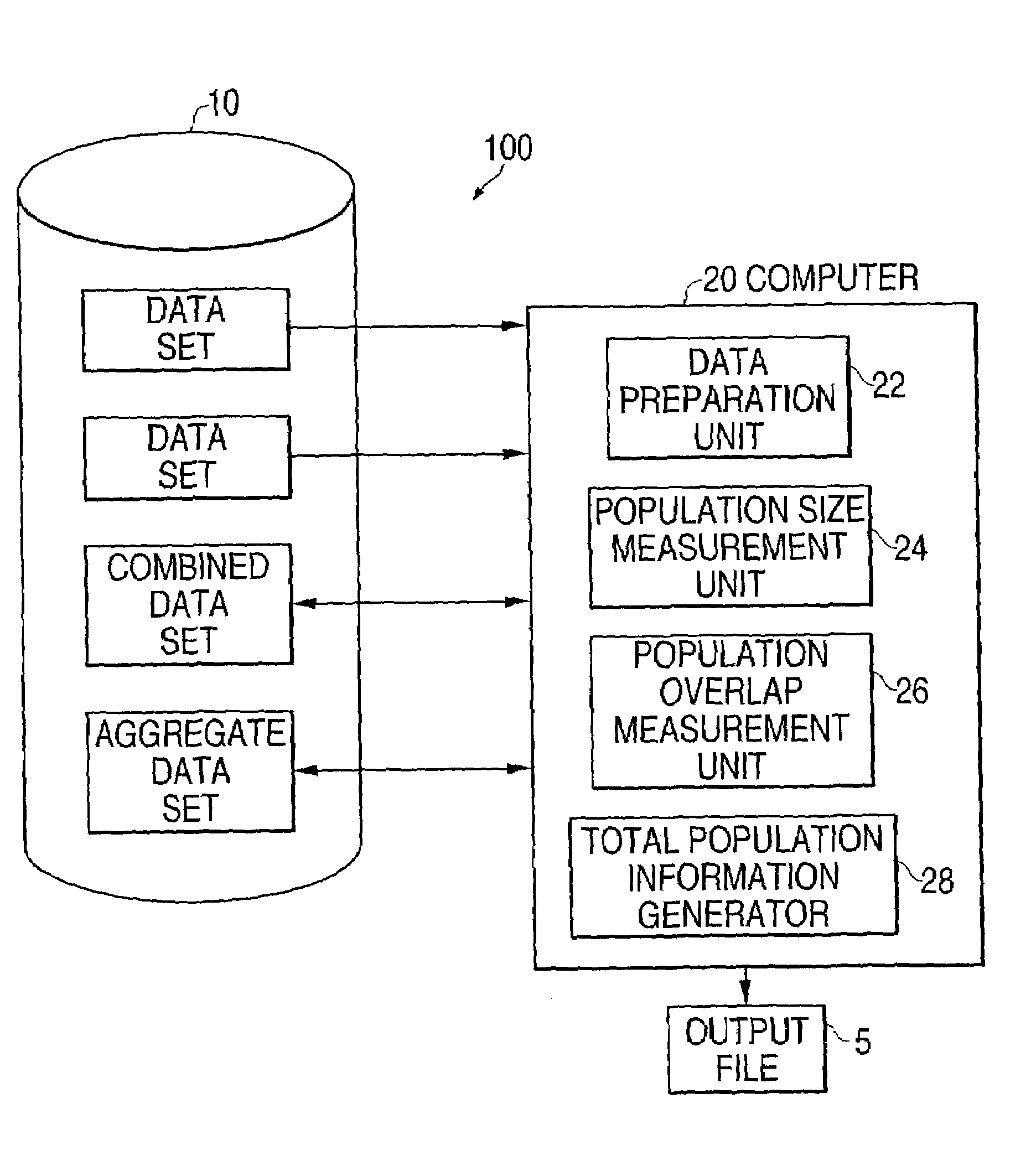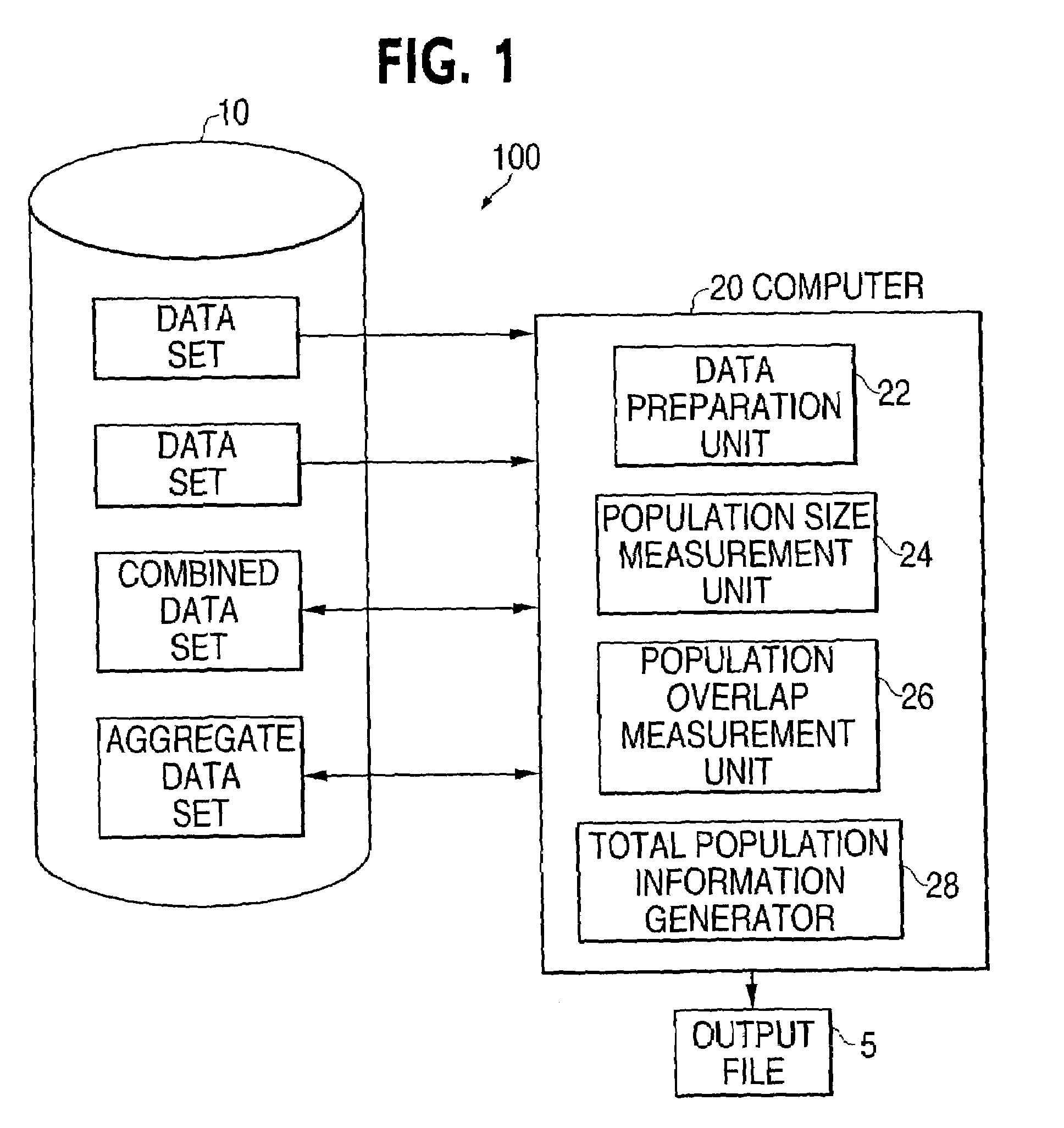Apparatus and method for probabilistic population size and overlap determination, remote processing of private data and probabilistic population size and overlap determination for three or more data sets
a technology of probabilistic population size and overlap, applied in the field of statistical techniques, can solve problems such as the complexity of social institutions, the inability of existing fragmented information systems to support the critical epidemiological function of determining the relationship among existing data sets, and the inability to measure population overlap
- Summary
- Abstract
- Description
- Claims
- Application Information
AI Technical Summary
Benefits of technology
Problems solved by technology
Method used
Image
Examples
Embodiment Construction
[0052]The paragraphs that follow will provide a detailed description of the preferred embodiments of the invention for determining the size and overlap of human populations doing so in a distributed processing system and doing so with more than two data sets, and a simple example of the application of the invention to non-human populations. These paragraphs will also include a discussion of the general mathematical theory underlying the invention, and distinguish the solution to the population size problem offered by this invention from other solutions on both theoretical / mathematical and empirical grounds. Since mathematical solutions to the population overlap problem that do not require unique individual identifiers are not evident in the literature, the mathematics of this solution will be discussed without contrast to other solutions.
[0053]In the classical coupon collector problem, the solution to the problem answers the question “How many baseball cards must a collector collect...
PUM
 Login to View More
Login to View More Abstract
Description
Claims
Application Information
 Login to View More
Login to View More - R&D
- Intellectual Property
- Life Sciences
- Materials
- Tech Scout
- Unparalleled Data Quality
- Higher Quality Content
- 60% Fewer Hallucinations
Browse by: Latest US Patents, China's latest patents, Technical Efficacy Thesaurus, Application Domain, Technology Topic, Popular Technical Reports.
© 2025 PatSnap. All rights reserved.Legal|Privacy policy|Modern Slavery Act Transparency Statement|Sitemap|About US| Contact US: help@patsnap.com



